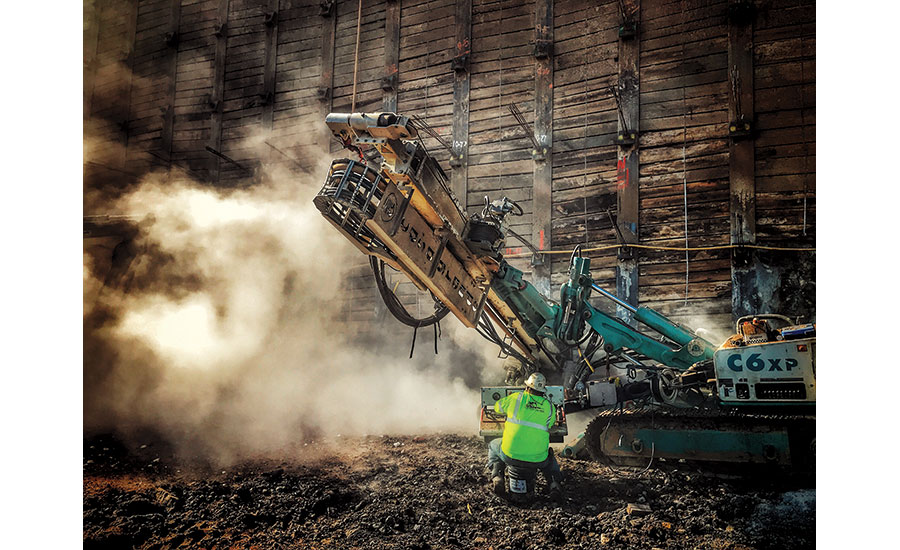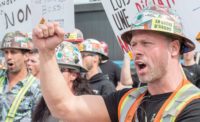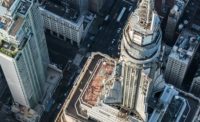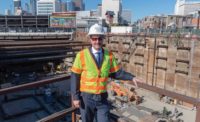How the Photo Team Settled the Dust Dispute

The photo that appears on the cover of this issue of ENR, a drill rig puncturing concrete or stone at the base of a new retaining wall being built in Chattanooga, Tenn., came out on top in online voting for the image that would make the best foldout cover.
PHOTO COURTESY DYLAN JONES\GEOSTABILIZATION INTERNATIONAL
The photo that appears on the cover of this issue of ENR, a drill rig puncturing concrete or stone at the base of a new retaining wall being built in Chattanooga, Tenn., came out on top in online voting for the image that would make the best foldout cover.
One of the most important elements in the gritty scene captured by Dylan Jones, project engineer for GeoStabilization International, is the backlit shroud of particles hanging in the air to the left side of a project superintendent. But it presented a problem for a safety manager who saw the photo. He asked ENR why we weren’t more concerned about the particles in the air and the possible health effects on the driller and others.
“With the heightened awareness around silica dust exposure, I would strongly encourage you not to include this photo in the magazine,” he wrote. The drills can be equipped, he wrote, with an integrated water delivery system that suppresses dust. Or the dust can be controlled with a shroud or cowling and dust collection system with filtered vacuums.
|
Related Link |
The last thing we want to do in our photo contest is show unsafe practices without realizing it. That’s why, beginning with the fourth of our 16 photo contests, published in 2005, ENR’s panel of judges has always included a safety professional who can help us pick out hazards or violations that escape our notice.
Before the alert viewer raised questions about that photo, we had been advised that it portrayed no clear violation or hazard that required abatement.
We then spoke to the winning photographer, who said his company often uses water controls on its drilling equipment and equips drillers with respiratory protective equipment on most of its drilling. He wasn’t sure, but he believed the amount of stone or concrete being drilled at the base of the wall—at night, with the project team working long hours to finish the job—was small. Otherwise, he said, it’s likely dust control would have been used.
The issue of photos and safety hazards isn’t new to ENR. Editors regularly deal with this subject, and take it very seriously.
Our policy is to show the industry as it is in our many news stories. But for project features, where we have photo choices, we avoid showing safety violations or unabated hazards. If we think there is one in a photo, we look for alternatives. For the photo contest, readers have told us loudly and clearly that they do not find beauty in scenes where workers are at risk. That makes sense to us, too. And it reminds us why it’s so important to write about safety practices, to investigate accidents and to do everything journalists can to help prevent them.



